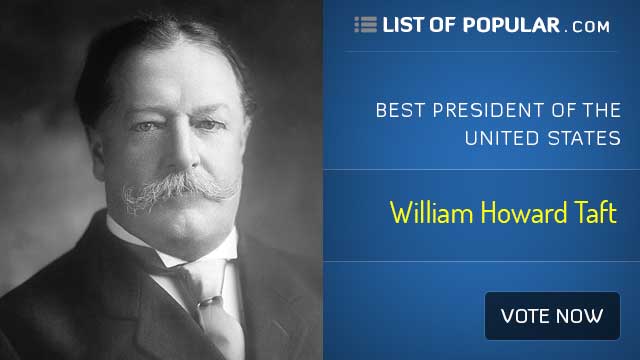The Best US President - William Howard Taft
Early Life and Education
William Howard Taft, the 27th President of the United States, was born on September 15, 1857, in Cincinnati, Ohio. Coming from a prominent political family, Taft's father, Alphonso Taft, served as Secretary of War and as U.S. Attorney General. Following in his family's tradition, Taft attended Yale College, where he graduated second in his class in 1878. He then studied law at the University of Cincinnati and, after earning his law degree, entered the legal profession.
Early Career in Law and Government
Taft's early career was marked by his success as a lawyer and his involvement in government service. He served as assistant prosecutor for Hamilton County, Ohio, and later as solicitor general of the United States. His contributions in these roles caught the attention of President Benjamin Harrison, who appointed Taft as U.S. Solicitor General in 1890. Taft's dedication and legal acumen continued to propel his career, leading to his appointment as a federal circuit judge in 1892.
The Governorship of the Philippines
In 1900, President William McKinley appointed Taft as the first civilian Governor-General of the Philippines, a position he held until 1904. Taft's administration focused on infrastructure development, education, and public health in the Philippines, earning him a reputation as a capable administrator. His commitment to fostering self-governance in the islands set the stage for their eventual independence.
The Presidency: Policies and Challenges
Taft's presidency, which began in 1909, was marked by a focus on progressive policies. He advocated for trust-busting, supporting the breakup of monopolies, and he initiated more antitrust suits than his predecessor, Theodore Roosevelt. Taft also prioritized tariff reform with the passage of the Payne-Aldrich Tariff Act, though it fell short of progressive expectations and led to a split within the Republican Party.
Conservation and Environmental Stewardship
Taft made significant contributions to conservation during his presidency. He expanded the national forest system, creating more than a million acres of new public lands. He also worked to protect wildlife, setting aside lands for national parks and monuments. Taft's commitment to environmental stewardship laid the groundwork for later conservation efforts and the establishment of the National Park Service in 1916.
Post-Presidential Years and Supreme Court
After leaving the presidency in 1913, Taft's public service continued. In an unusual turn of events, he fulfilled a lifelong ambition by accepting an appointment as Chief Justice of the United States in 1921, becoming the only individual to hold both the presidency and chief justiceship. As Chief Justice, Taft focused on enhancing the efficiency of the federal judiciary and improving court administration.
Legacy and Later Life
William Howard Taft's legacy is complex, reflecting both his successes and challenges during a transformative period in American history. His contributions to trust-busting, conservation, and legal reform are significant, even as political divisions within his party affected his presidency. Taft spent his later years writing and teaching law at Yale University. He passed away on March 8, 1930, leaving a legacy as a dedicated public servant, jurist, and an influential figure in the early 20th-century United States.
In summary, William Howard Taft's journey from a legal career to the presidency, his progressive policies, and his enduring contributions to conservation and the judiciary make him a distinctive figure in American history. His legacy reflects a commitment to public service and the pursuit of justice.

